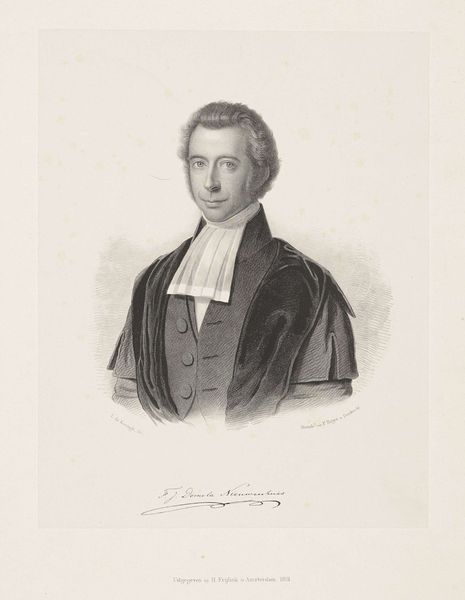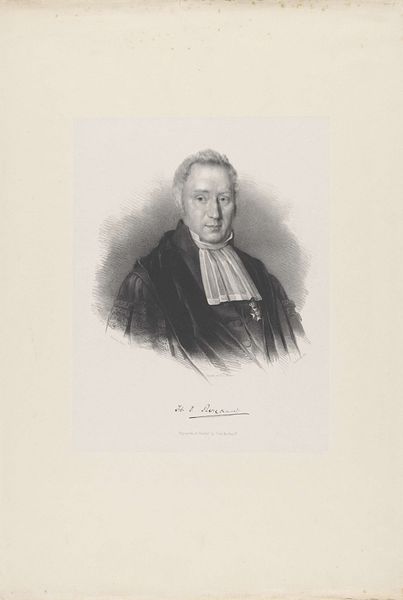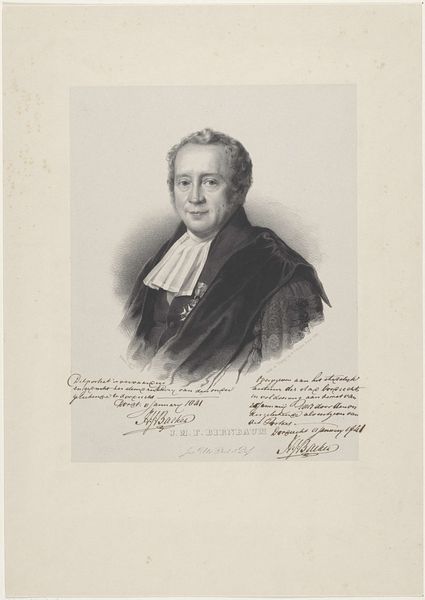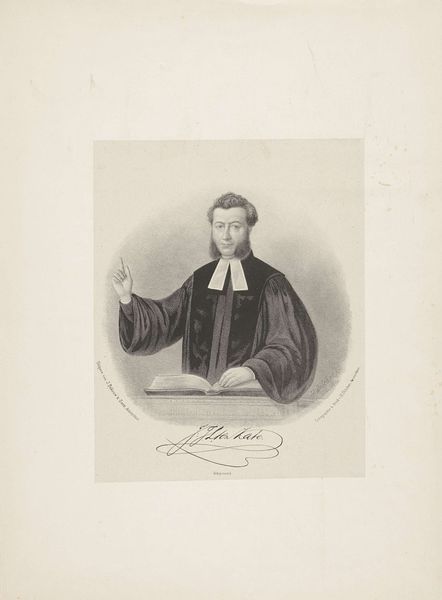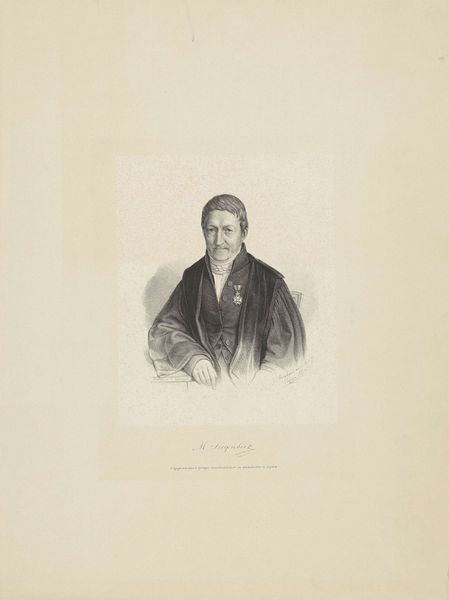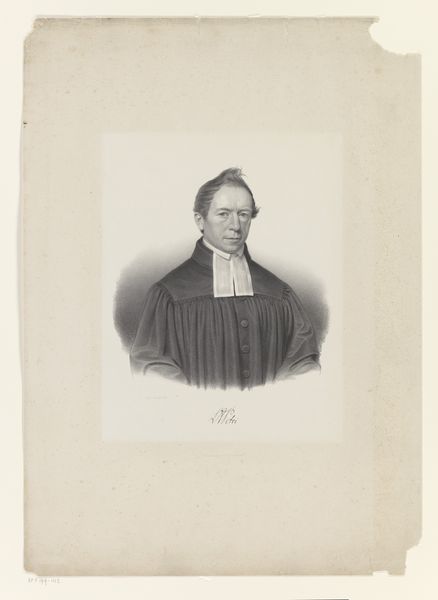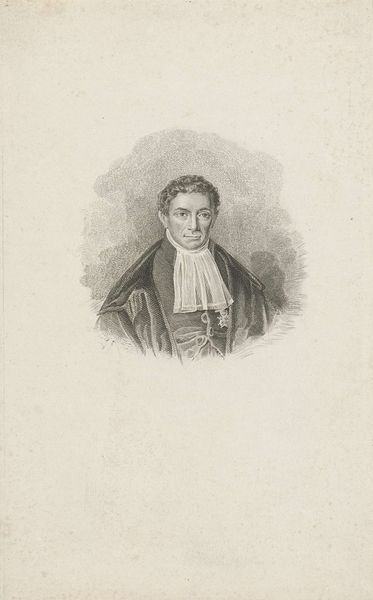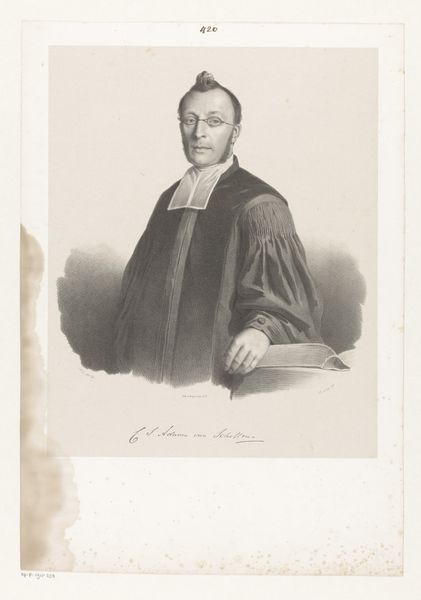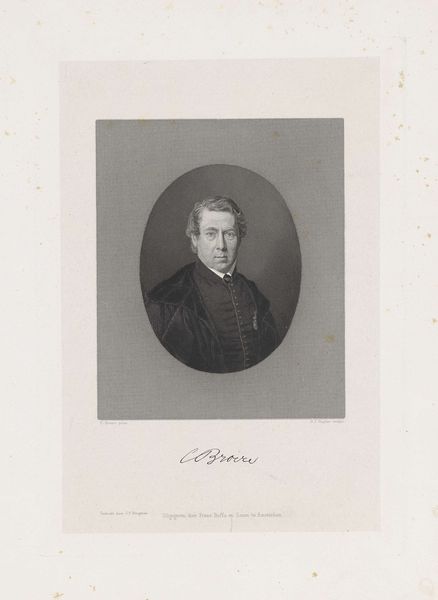
#
light pencil work
#
wedding photograph
#
charcoal drawing
#
portrait reference
#
pencil drawing
#
black and white
#
yellow element
#
portrait drawing
#
white background
#
graphite
Dimensions: height 463 mm, width 350 mm
Copyright: Rijks Museum: Open Domain
Curator: There's an arresting quality to this portrait – a certain formality and reserve. Editor: Indeed. This is a work by Adrianus Johannes Ehnle, dating back to 1853. It's titled "Portret van S. Muller," and it currently resides here at the Rijksmuseum. Ehnle captures the sitter with such delicate pencil work. I'm curious about Muller; what role did individuals in formal attire such as his have during this historical moment? Curator: The dark robe and white collar certainly evoke a sense of authority and intellectual pursuit. Throughout the ages, this juxtaposition symbolizes power structures, educational attainment, or affiliation to particular social groups, influencing an audience's perception of people within a culture. Who was this S. Muller? Was he an academic? Editor: From what I've gleaned, he was a prominent legal figure. The portrait seems to adhere to certain conventions for depicting figures of authority. Note how Ehnle uses light and shadow to convey both status and the psychological weight of his position. It’s very subtle. What do you make of the composition? Curator: There’s a starkness to it, a clear absence of adornment. It almost feels like an exercise in conveying personhood through pure line and form. His gaze, however, is the real focal point – there is intelligence, weariness and knowledge there. Considering how much of traditional portraiture reinforced gendered, racial, and class-based hierarchies, how can we contextualize depictions like these within societal discourse? Editor: Absolutely, the gaze speaks volumes! The starkness, though, does make me wonder. This lack of ostentation seems significant. In its minimalist style, the emphasis would almost suggest his commitment to justice over wealth, or intellect over opulence. Could his ethics or politics explain this simple presentation? What meaning could others draw from its use of traditional dress to reinforce conventional codes or question conventionality in doing so? Curator: That's fascinating. Perhaps a calculated choice to project an image of humility and integrity. In viewing Ehnle's 1853 work, it also calls upon broader ethical dimensions relevant for both that historical era and ours today. The interplay between surface presentation and an implied inner self resonates still. Editor: The portrait reminds us that even seemingly straightforward images can conceal layered meanings. As always, further examination reveals fascinating points of view that challenge simple assumptions about status.
Comments
No comments
Be the first to comment and join the conversation on the ultimate creative platform.

